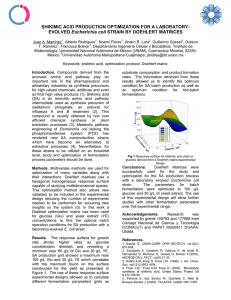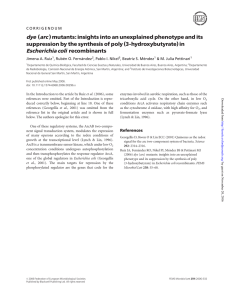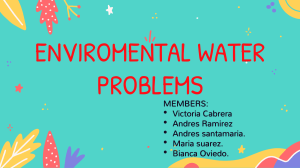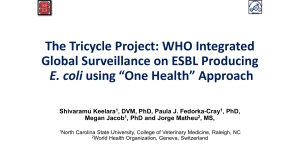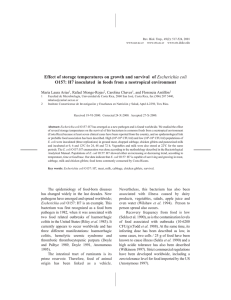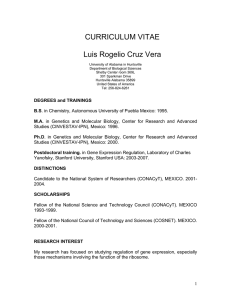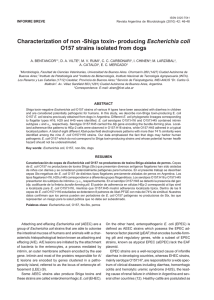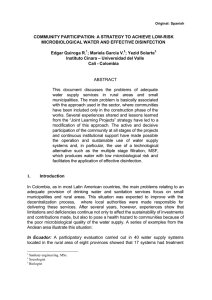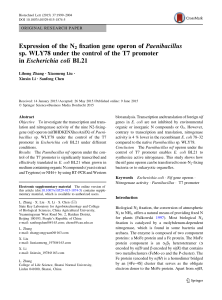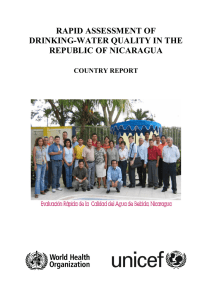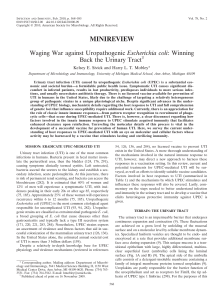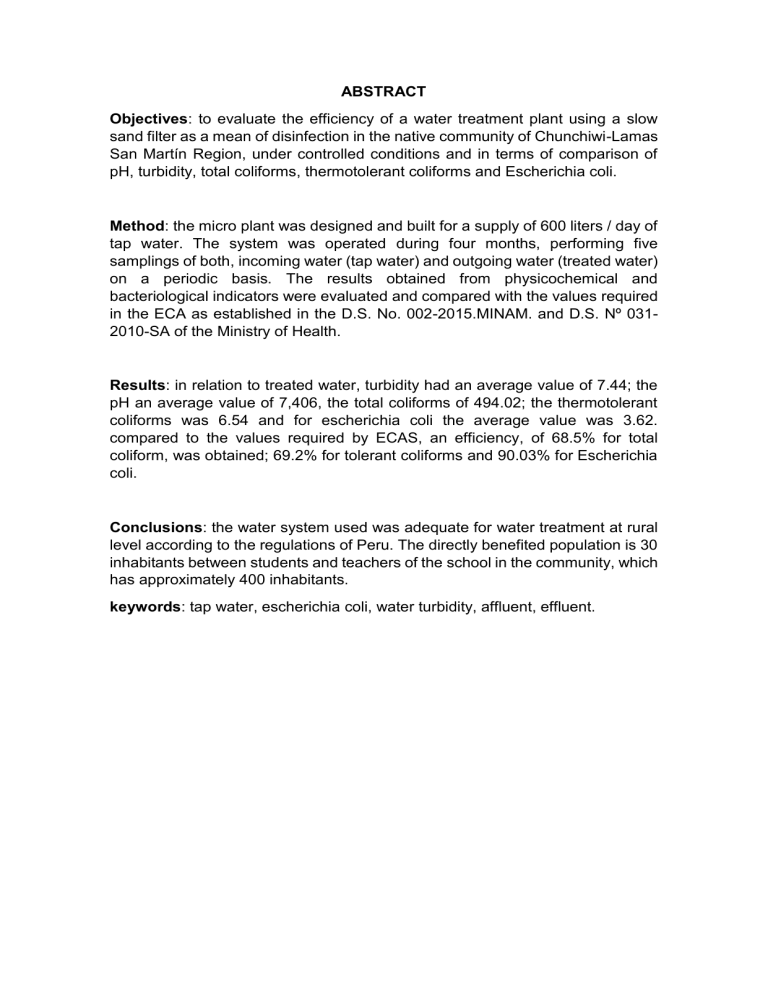
ABSTRACT Objectives: to evaluate the efficiency of a water treatment plant using a slow sand filter as a mean of disinfection in the native community of Chunchiwi-Lamas San Martín Region, under controlled conditions and in terms of comparison of pH, turbidity, total coliforms, thermotolerant coliforms and Escherichia coli. Method: the micro plant was designed and built for a supply of 600 liters / day of tap water. The system was operated during four months, performing five samplings of both, incoming water (tap water) and outgoing water (treated water) on a periodic basis. The results obtained from physicochemical and bacteriological indicators were evaluated and compared with the values required in the ECA as established in the D.S. No. 002-2015.MINAM. and D.S. Nº 0312010-SA of the Ministry of Health. Results: in relation to treated water, turbidity had an average value of 7.44; the pH an average value of 7,406, the total coliforms of 494.02; the thermotolerant coliforms was 6.54 and for escherichia coli the average value was 3.62. compared to the values required by ECAS, an efficiency, of 68.5% for total coliform, was obtained; 69.2% for tolerant coliforms and 90.03% for Escherichia coli. Conclusions: the water system used was adequate for water treatment at rural level according to the regulations of Peru. The directly benefited population is 30 inhabitants between students and teachers of the school in the community, which has approximately 400 inhabitants. keywords: tap water, escherichia coli, water turbidity, affluent, effluent.
